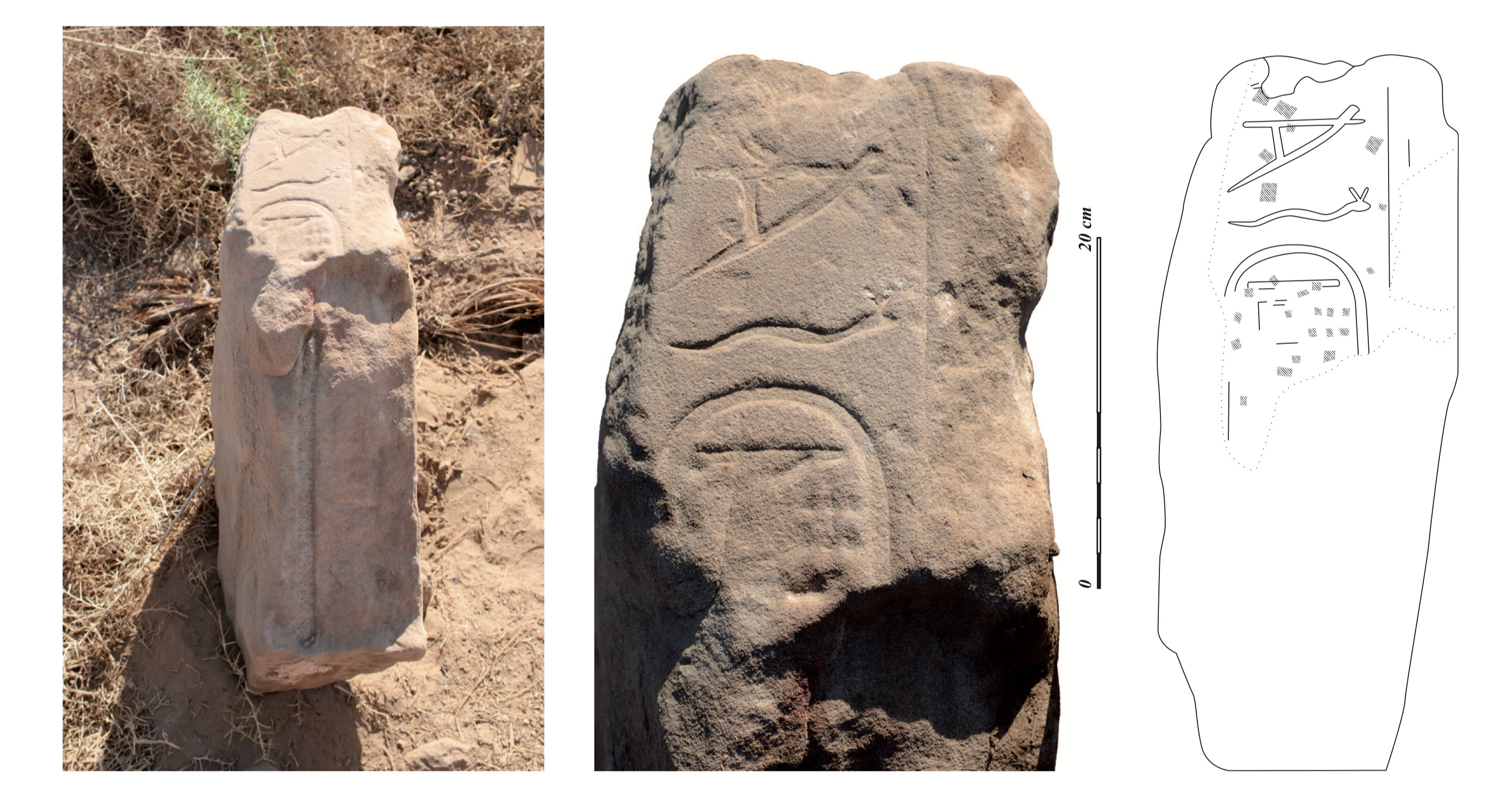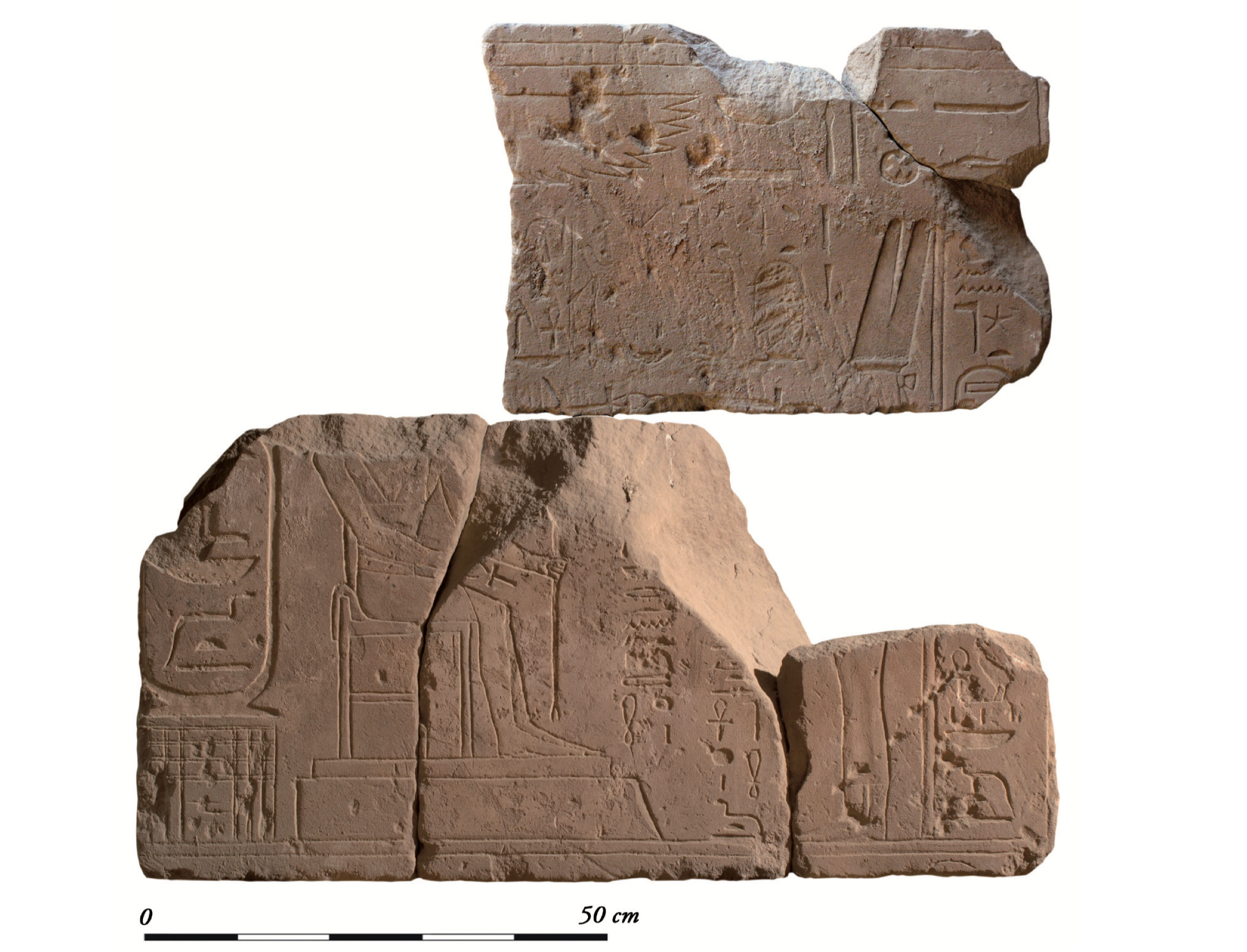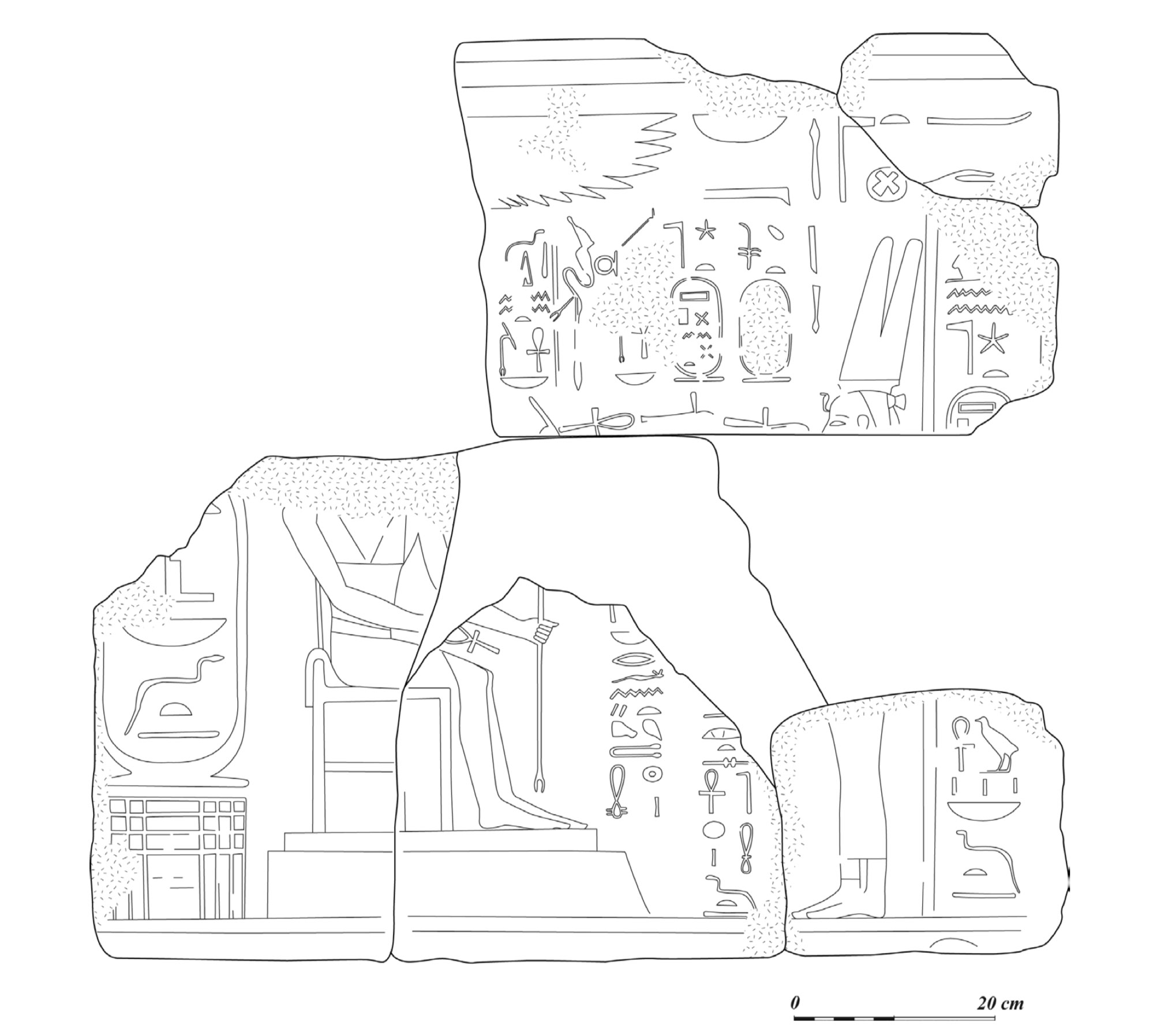The Chapel of Osiris Nebdjet/Padedankh in North-Karnak
Project description
The vast program of excavation, documentation and epigraphic study of the Osirian chapels and necropolis of Karnak was initiated in 1993 by the Centre Franco-Égyptien d’Étude des Temples de Karnak (CFEETK) and then extended by a collaboration with the Institute Français d’Archéologie Orientale (IFAO). The aim of the short epigraphic survey carried out on site and in the Cairo Museum in 2008-2009 was to establish the date and cultic dedication of the so-called chapel of Osiris Nebdjet, at North-Karnak.
Decorative program
The exact architectural features of the Osiris Nebdjet chapel are not known, some blocks with epigraphic material are now conserved in either the Cairo Museum or the magazine in Karnak.
“The architecture of the chapel was similar to others built in the 25th dynasty. From the East, a first door gave access to a first room/courtyard... A second door separates this first area from another, where Legrain found a third door he thought to be that of the naos. Three blocks with traces of epigraphic work were recorded in situ. A thin doorjamb showed part of the protocol of King Taharqo of the 25th dynasty (Fig. 4), his cartouche partly erased, probably during the damnatio memoriae instigated by Psametik II.”
“The most interesting blocks lie now in the Karnak Magazine… The most important are two blocks that form part of a large lintel of one of the monument’s axis gates (Fig. 6-7). One can see the remnants of a double scene under the flying Horus of Behdet. On the right the Di- vine Votaress stands in front of the god Amun who gives her “all life and power”. The priestess, entitled “God’s Adoratrix” and “royal daughter of [Piankhy]”, performs a ritual whose caption is partly lost (jrt, ʿnḫ.tj mj Rʿ), in return she receives a stream of ankh-signs explained by the text “all [life] to your nostrils, like Ra” ([ʿnḫ] nb r fnty.ṯmj Rʿ). Behind her, a column of text gives: “May the God’s Adoratrix, Shepe[nupet] be [at the head of] all [the ka] of the Livings, for ever”… Behind Amun’s throne, a large cartouche contains the name of Wsjr nb-ḏt “Osiris, master of Eternity”, on the top of a palace façade pattern.”
Documentation method
Not specified by the author.
Visual example(s)
Fragment of doorjamb with the name of Taharqo (Fig. 4.) Photo by © Fr. Payraudeau
Lintel in the name of Osiris Nebdjet (Fig. 6.) Photo by © CNRS-CFEETK/J.-Fr. Gout
Facsimile of the inscriptions on the lintel (Fig. 7.) Drawing by © Fr. Payraudeau
What we like
- Clean, single-weight lines representing the carved decorative surface.
- Larger damaged, eroded or unreadable areas are indicated by a specific pattern fill giving some context to the line drawings and a visual explanation of some missing decorative elements.
- Chisel marks - holding information value because of their intentional destructive nature - are represented by rectangular patches filled with parallel striping, indicating their size, shape and placement.
- Composite drawings of multiple fragments visualize the relative placement of each piece, providing a more comprehensive view of the larger decorative program.
Additional reading
For the original context of the material appearing in this article see: Frédéric Payraudeau – The Chapel of Osiris Nebdjet/Padedankh in North-Karnak. An Epigraphic Survey in: Cahiers de Karnak 15 (2015): 215-235.
For more information on this project, visit the IFAO page or the CFEETK page of the Osiris sanctuaries of Karnak.
For additional information on the many different projects of the Franco-Egyptian Center (CFEETK) visit their website.
Précis and commentary by Júlia Schmied






0 comment(s)
Leave a comment(We'll keep your email address private)